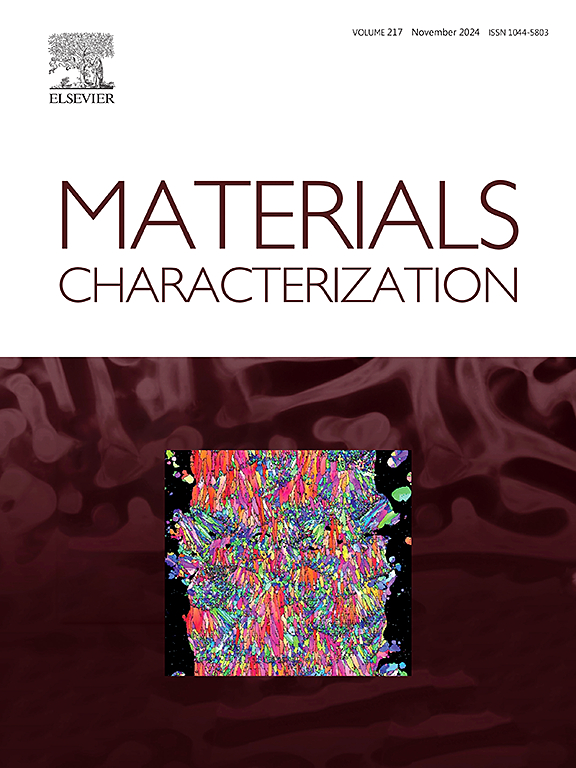Effect of heat treatment on mechanical properties, wear and corrosion resistance of HVAF sprayed FeCoNiCrMo high-entropy alloy coating
IF 4.8
2区 材料科学
Q1 MATERIALS SCIENCE, CHARACTERIZATION & TESTING
引用次数: 0
Abstract
Heat treatment was employed to simultaneously enhance the wear and corrosion resistance of FeCoNiCrMo high-entropy alloy (HEA) coatings sprayed using high velocity air-fuel (HVAF) techniques. To investigate the mechanisms of phase transformation and the relationship between microstructural evolution and the mechanical, wear, and anti-corrosion properties, the coatings were subjected to heat treatment at various temperatures. The results revealed that the as-sprayed FeCoNiCrMo coating comprises FCC and σ phases. The μ phase precipitates at the edges of the σ phase following heat treatment at 700 °C, while the σ phase undergoes complete dissolution after heat treatment at 900 °C. Bond tension tests indicate that the coating maintains consistently high bonding strength with the substrate. Notably, the coating exhibits peak hardness (805.2 HV) and lowest wear rate (1.6 × 10−5 mm3·N−1·m−1) after a 700 °C, 4-h heat treatment, attributed to the precipitation strengthening of the hard phase, with abrasive and oxidative wear identified as the dominant wear mechanisms. Additionally, the corrosion resistance of the coating progressively improves with increasing temperature. The coating experiences static recrystallization after heat treatment at 900 °C, leading to a homogeneous structure and refined grains, which significantly enhance its corrosion resistance.
热处理对HVAF喷涂FeCoNiCrMo高熵合金涂层力学性能、耐磨性和耐腐蚀性的影响
采用高速空气燃料(HVAF)技术对FeCoNiCrMo高熵合金(HEA)涂层进行热处理,同时提高其耐磨损和耐腐蚀性能。为了研究相变机理以及微观组织演变与力学、磨损和抗腐蚀性能的关系,对涂层进行了不同温度的热处理。结果表明,喷涂后的FeCoNiCrMo涂层由FCC相和σ相组成。700℃热处理后,μ相在σ相边缘析出,900℃热处理后,σ相完全溶解。结合张力试验表明,涂层与基体的结合强度始终较高。值得注意的是,经过700℃、4 h热处理后,涂层硬度达到峰值(805.2 HV),磨损率最低(1.6 × 10−5 mm3·N−1·m−1),这是由于硬相的析出强化,磨料和氧化磨损是主要的磨损机制。随着温度的升高,涂层的耐蚀性逐渐提高。经900℃热处理后,涂层发生静态再结晶,组织均匀,晶粒细化,耐蚀性显著增强。
本文章由计算机程序翻译,如有差异,请以英文原文为准。
求助全文
约1分钟内获得全文
求助全文
来源期刊

Materials Characterization
工程技术-材料科学:表征与测试
CiteScore
7.60
自引率
8.50%
发文量
746
审稿时长
36 days
期刊介绍:
Materials Characterization features original articles and state-of-the-art reviews on theoretical and practical aspects of the structure and behaviour of materials.
The Journal focuses on all characterization techniques, including all forms of microscopy (light, electron, acoustic, etc.,) and analysis (especially microanalysis and surface analytical techniques). Developments in both this wide range of techniques and their application to the quantification of the microstructure of materials are essential facets of the Journal.
The Journal provides the Materials Scientist/Engineer with up-to-date information on many types of materials with an underlying theme of explaining the behavior of materials using novel approaches. Materials covered by the journal include:
Metals & Alloys
Ceramics
Nanomaterials
Biomedical materials
Optical materials
Composites
Natural Materials.
 求助内容:
求助内容: 应助结果提醒方式:
应助结果提醒方式:


